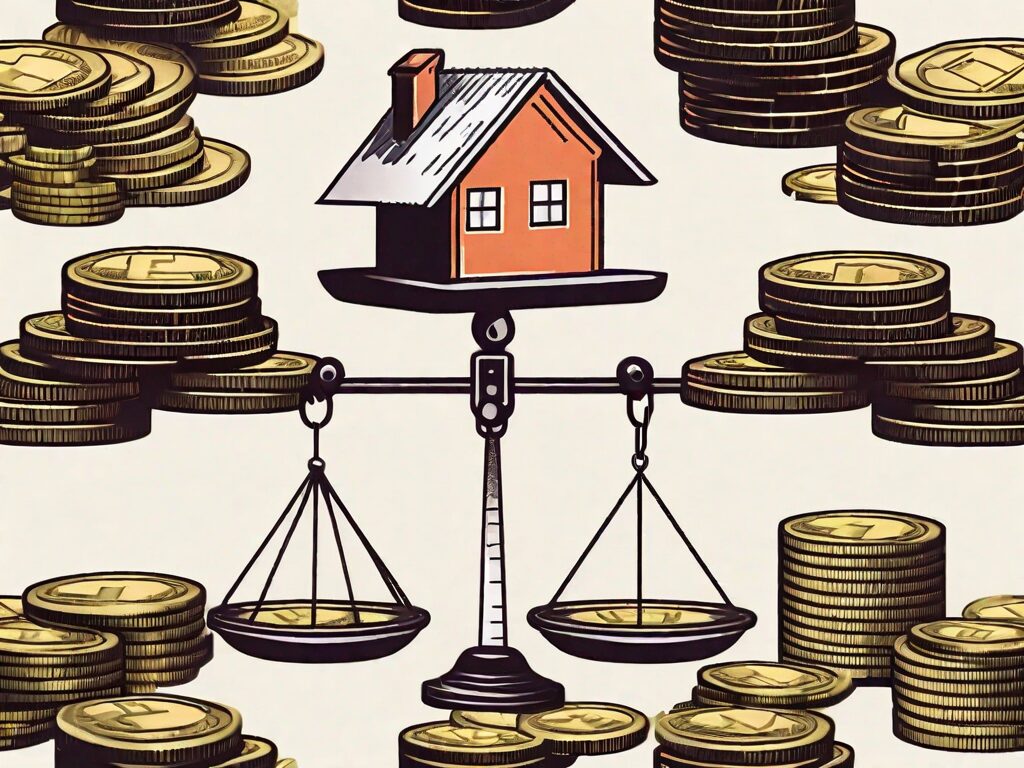
Agent A-Team or Solo Superhero? Finding the Right Real Estate Partner for Your Selling Journey in Wildwood Florida
When it comes to selling your home in Wildwood, Florida,…
January 29, 2024
If you’re a homeowner, you may have heard about mortgage refinancing as a way to potentially save money or achieve other financial goals. But what exactly does it entail, and what are the costs involved? In this ultimate guide, we will break down the price tag of mortgage refinancing, explore the motivations behind homeowners choosing to refinance, demystify the refinancing process, and provide key takeaways and answers to your questions.
When considering mortgage refinancing, it’s important to understand the costs involved. These costs can vary depending on factors such as your loan amount, credit score, and the lender you choose. Here are the key costs to consider:
One of the main costs associated with mortgage refinancing is closing costs. These costs can include application fees, appraisal fees, title search and insurance fees, and attorney fees. It’s essential to carefully review and compare these costs from different lenders before making a decision.
Closing costs can vary depending on the location and the complexity of the transaction. For example, in some states, there may be additional fees for recording the new mortgage or transferring the title. It’s important to factor in these additional costs when estimating the total expenses of refinancing.
In addition to closing costs, there may be other fees such as origination fees, which are charged by the lender for processing the loan. These fees can vary significantly, so it’s important to carefully evaluate them. Some lenders may offer lower origination fees but compensate by charging higher interest rates, so it’s crucial to consider the overall cost of the loan.
While refinancing does come with costs, it’s also important to consider the potential savings it can offer. By refinancing to a lower interest rate, you could potentially save thousands of dollars over the life of your loan. It’s crucial to calculate these potential savings to determine if refinancing is a financially sound decision for you.
When calculating the potential savings, it’s important to take into account the length of time you plan to stay in your home. If you’re planning to move in the near future, the savings from refinancing may not outweigh the costs. However, if you plan to stay in your home for a longer period, the savings can be substantial.
Furthermore, refinancing can also provide an opportunity to change the terms of your loan. For example, you may choose to switch from an adjustable-rate mortgage to a fixed-rate mortgage to provide stability in your monthly payments. This change in terms can also impact the potential savings and should be considered when evaluating the financial benefits of refinancing.
It’s important to note that the potential savings of refinancing can vary depending on individual circumstances. Factors such as your current interest rate, the difference in interest rates between your current loan and the new loan, and the remaining term of your loan can all impact the overall savings. Consulting with a mortgage professional can help you accurately assess the potential savings and make an informed decision.
Now that we’ve explored the costs, let’s delve into the motivations behind homeowners choosing to refinance their mortgages. Understanding these motivations can help you determine if refinancing is the right choice for you.
Refinancing a mortgage is a decision that homeowners make for various reasons, driven by their unique financial circumstances and goals. Let’s take a closer look at some of the common reasons why homeowners consider refinancing:
One of the primary motivations for refinancing is to secure a lower interest rate. If interest rates have dropped since you obtained your original mortgage, refinancing can help you reduce your monthly mortgage payment. By refinancing at a lower interest rate, homeowners can potentially save a significant amount of money over the life of their mortgage.
For example, let’s say you have a 30-year fixed-rate mortgage with an interest rate of 5%. If you refinance and secure a new interest rate of 3.5%, you could potentially save thousands of dollars in interest payments over the term of your loan.
Another motivation for refinancing is to change the loan term. Refinancing allows you to convert a 30-year mortgage into a 15-year mortgage or vice versa. This flexibility can help you align your mortgage with your financial goals.
If you have a 30-year mortgage and want to pay off your mortgage sooner, refinancing to a 15-year mortgage can help you achieve that goal. While your monthly payments may increase, you’ll be able to save a substantial amount of money on interest payments over the life of the loan.
On the other hand, if you’re looking to lower your monthly payment, refinancing from a 15-year mortgage to a 30-year mortgage can spread out your payments over a longer period, reducing the amount you owe each month.
Aside from potentially saving money, refinancing can offer other benefits. For example, it can provide an opportunity to consolidate debt. By refinancing for a higher amount than your current mortgage balance, you can access the equity in your home and use the extra funds to pay off high-interest debts.
Consolidating debt through refinancing can be a smart financial move, especially if you have multiple high-interest debts, such as credit card balances or personal loans. By paying off these debts with a lower interest rate mortgage, you can potentially save money on interest payments and simplify your monthly finances.
Additionally, refinancing may allow you to switch from an adjustable-rate mortgage (ARM) to a fixed-rate mortgage. An ARM typically has an initial fixed-rate period, after which the interest rate can fluctuate based on market conditions. This uncertainty can make budgeting challenging, as your monthly mortgage payment can increase significantly if interest rates rise.
By refinancing to a fixed-rate mortgage, you can lock in a stable interest rate for the duration of your loan. This provides peace of mind and protection against future interest rate increases, allowing you to budget more effectively and avoid any potential financial strain.
As you can see, there are several motivations behind homeowners choosing to refinance their mortgages. Whether it’s securing a lower interest rate, changing the loan term, consolidating debt, or switching from an adjustable-rate to a fixed-rate mortgage, refinancing can offer significant financial advantages. However, it’s essential to carefully evaluate your individual circumstances and consult with a mortgage professional to determine if refinancing is the right choice for you.
Now that we understand the motivations behind refinancing, let’s demystify the actual process. Here, we’ll provide a step-by-step guide to help you navigate through the refinancing journey.
Refinancing your mortgage can be a complex process, but with the right knowledge and guidance, it can also be a rewarding one. By refinancing, you have the opportunity to lower your monthly payments, reduce your interest rate, or even shorten the term of your loan. It’s a financial strategy that can help you achieve your goals and improve your overall financial well-being.
Before starting the refinancing process, it’s essential to determine your financial goals and gather the necessary documentation, such as pay stubs, tax returns, and bank statements. These documents will provide lenders with a comprehensive view of your financial situation and help them assess your eligibility for refinancing.
Once you’ve completed these initial steps, you can proceed with the following:
When refinancing, it’s important to understand the terms and rates offered by different lenders. Familiarize yourself with terms such as annual percentage rate (APR), points, and prepayment penalties. This knowledge will empower you to make informed decisions during the refinancing process.
The annual percentage rate (APR) represents the total cost of borrowing, including both the interest rate and any additional fees or charges. It’s a crucial factor to consider when comparing loan offers from different lenders. Points, on the other hand, are upfront fees paid to the lender to reduce the interest rate. Prepayment penalties are fees charged by some lenders if you pay off your loan early. Understanding these terms will help you evaluate loan offers and choose the one that best aligns with your financial goals.
Refinancing your mortgage is a significant financial decision that requires careful consideration. By understanding the refinancing process and familiarizing yourself with the terms and rates, you can confidently navigate through the journey and make choices that will benefit your long-term financial well-being.
After exploring the costs, motivations, and process of mortgage refinancing, let’s highlight some key takeaways and considerations:
When it comes to mortgage refinancing, there are several important factors to consider. One of the most significant considerations is the impact of closing costs and other fees on the overall cost of refinancing. These costs can vary significantly from lender to lender, so it’s crucial to thoroughly review and compare them before making a decision. By doing so, you can ensure that you are getting the best deal possible and that the potential savings from refinancing are not outweighed by the expenses.
Another key takeaway is the importance of calculating potential savings when considering mortgage refinancing. By taking into account factors such as reduced monthly payments or interest savings, you can determine whether refinancing is a financially beneficial option for you. This calculation can help you weigh the potential benefits against the costs involved in refinancing, allowing you to make an informed decision.
Understanding your motivations for refinancing is also essential in the decision-making process. People refinance their mortgages for various reasons, such as obtaining a lower interest rate, shortening the loan term, or accessing equity for other financial needs. By identifying your specific motivations, you can align your refinancing goals with the available options and choose the most suitable path for your financial situation.
Additionally, it’s worth noting that mortgage refinancing is not a one-size-fits-all solution. Each individual’s circumstances and goals are unique, and what works for one person may not work for another. Therefore, it’s crucial to carefully evaluate your own financial situation, consider the long-term implications, and consult with a mortgage professional who can provide personalized advice based on your specific needs.
In conclusion, mortgage refinancing is a complex process that requires careful consideration of various factors. By thoroughly reviewing and comparing closing costs, calculating potential savings, and understanding your motivations, you can make an informed decision that aligns with your financial goals. Remember to seek professional advice and take the time to evaluate your options before proceeding with refinancing.
Finally, let’s address some frequently asked questions about mortgage refinancing:
Refinancing is not a one-size-fits-all solution. Consider factors such as your current interest rate, the length of time you plan to stay in your home, and your financial goals. Consulting with a mortgage professional can provide personalized guidance.
When evaluating whether refinancing is right for you, it’s important to take into account your current financial situation. Are you looking to lower your monthly mortgage payments? Or perhaps you want to pay off your mortgage faster? Understanding your goals will help you determine if refinancing is the right move.
Another factor to consider is the current interest rates. If interest rates have dropped since you initially took out your mortgage, refinancing could potentially save you a significant amount of money over the life of your loan.
Additionally, the length of time you plan to stay in your home is crucial. If you are planning to move in the near future, refinancing may not be the most cost-effective option, as it can take several years to recoup the closing costs associated with refinancing.
Ultimately, consulting with a mortgage professional is highly recommended. They can assess your unique financial situation and provide personalized guidance on whether refinancing is the right choice for you.
The refinancing process can take anywhere from 30 to 45 days, depending on various factors such as the complexity of the loan application, the speed of the appraisal, and the lender’s efficiency. It’s important to factor in this timeline when planning your refinancing journey.
Once you’ve made the decision to refinance, it’s important to be prepared for the timeline involved. The process typically begins with gathering all the necessary documents, such as pay stubs, tax returns, and bank statements. These documents will be used to assess your financial eligibility for refinancing.
After submitting your application, the lender will review your documents and may request additional information or clarification. This step can take some time, depending on the complexity of your financial situation.
Once your application is approved, an appraisal will be conducted to determine the current value of your home. This step is necessary to ensure that the loan amount does not exceed the value of the property.
Finally, the lender will prepare the loan documents for your review and signature. This process can take a few days as well. Once all the paperwork is complete, the lender will fund the loan, and you will officially be refinanced.
It’s important to be patient throughout the refinancing process and to stay in close communication with your lender. By understanding the timeline and being prepared, you can help ensure a smoother and more efficient refinancing experience.
In conclusion, understanding the costs of mortgage refinancing is crucial when evaluating the option. By exploring the motivations, demystifying the process, and considering key takeaways and answers to your questions, you’ll be equipped to make an informed decision about refinancing your mortgage.

If you want the Richr team to help you save thousands on your home just book a call.
 Book a call
Book a call